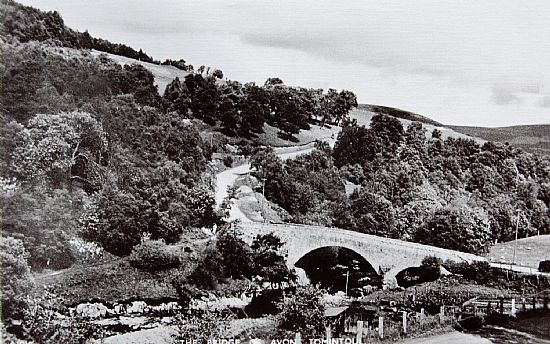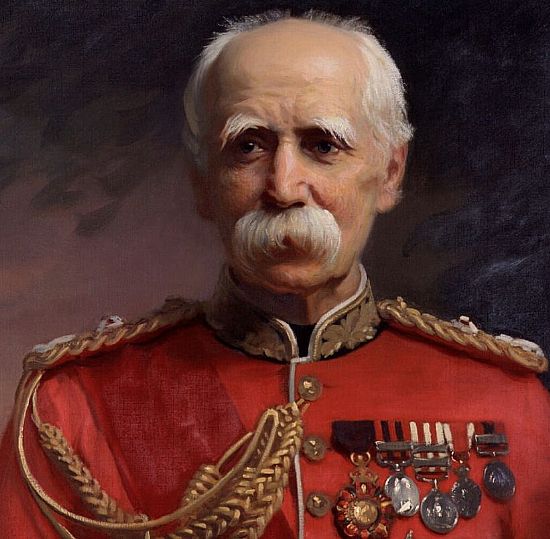THE SCHOOLMASTERS
Page under construction
Universal schooling may be an ideal but it has to be paid for. Nobles were already responsible for providing the clergy benefices. In bad seasons, rather than claiming rents from tenants, lairds had to subsidise their tenants to avoid starvation.
Money was just not available to pay for a raft of schoolmasters and schools. Various options developed. Some were schools financed by the members of the Society for the Propagation of Christian Knowledge and, in this area, Catholic Schools which were supported by Propaganda Fide and also by Religious Orders.
Peter Constable
One of the first SPCK teachers documented in Strathavon from 1724 to 1751 is Peter Constable.
In 1739 he was petitioning the Commissioners of Supply for a Bridge over the A’an along with Thomas Gordon of Fodderletter. The bridge was only finally built by the Colonel Hay and the 33rd Regiment in 1754 to carry the Wade military road.

A postcard of the original bridge over the A'an near Fodderletter. Courtesy: TGDC
Peter Constable later taught in Fordyce.
Alexander Allan
Constable was followed in Strathavon by Alexander Allan from 1751 to 1777. These early teachers probably had to teach where and when they could gather children without having any dedicated school buildings.
The Kirkmichael parish registers allow us to follow some his movements and those of his family by Katrine Hector.
In 1753 when their son William was born he was “schoolmaster in Inverlochie”. Three years later he is “schoolmaster in Ruthven” when an unnamed daughter arrives. In 1761 and 1765 when Alexander and Patrick were born he was in Delvorar and by 1769 when Katrin Ann was born he was in Tomintoul. (I am indebted to researches by Anita Steele and Bruce Bishop for this information)
John Fraser (?-)
He was probably another of the peripatetic teachers who si mentioned but so far no other details are known about him.
John Macpherson (Mac) (b 1810- )
The first teacher whom we can definitely associate with lads o’ pairts making good abroad and also with Tomachlaggan is John Macpherson. He was given his father’s name John when he was baptised at Easter Tomachlaggan on 6th March 1810. His father was described as “principal tacksman” at Tomchlaggan. His mother was Jessie McGregor.
When Macpherson graduated from Boyce's King’s College in 1831 he is listed as from Banff so he may also have attended Banff Academy. He certainly became Dominie at Mortlach School.
An interesting pen portrait was offered by a “professional gentleman” in The Banffshire Journal.
I have a very distinct recollection of John Macpherson as, my father being a great favourite of his, he called very frequently at our house until I was about 12 years of age. He was always styled “Mac” and was a splendidly built, atheletic, fine-looking man about six feet high. He was an excellent sportsman being a fine shot and an extra good fisher…
“Mac”, according to my father was first man in Mathematics in his year at Aberdeen University. At that time honours were not awarded, and there was no special prize for Maths.
The writer describes “Mac”s somewhat unusual form of punishment for persistent slackers.
When a scholar was in the habit of coming to school with his lessons unprepared, “Mac” made him don the “fool’s kep” or “wig”. This consisted of a bit of Highland sheep’s skin tied below the chin with two strings. Arrayed in this fashion, with the bellows - peats were used in those days - or tongs at “the shoulder” and a boy by his side to see that the necessary tour was completed, the culprit had to march from the school along Church Street, round the Square, and back to school, the observed of all observers. This punishment was dreaded more than a severe flogging.
Another glimpse of his teaching method is recalled indirectly.
Some years after “Mac” retired he was acting as a prompter to the local amateur actors. Ensconsed in the side wings out of sight of the audience, he was approached by one of the actors, who wispered, “What comes next?” “Mac” who had apparently by this time fallen into a dreamy mood, horrified the poor actor to the great amusement of the audience by shouting at the pitch of his voice, “Find you that out, sir”. The old man had been back at school.
Rewards were more personal but, like his form of punishment, this would not be acceptable today.
When “Mac” went out with his gun or fishing rod he took one of his favourite pupils with him. My father was often honoured in that way.
The correspondent continues.
Amongst “Mac’s” famous pupils there should not be forgotten the late Dr Innes of Duffown, Dr Brodie Cruikshank of Nairn; Sir James Cantlie, London who was for a short time at Milne’s Institution, Fochabers before he went ot University; the late Lieut.-Col Keir RAMC; the late Adam Myron, schoolmaster Inveravon; the late John Symon of Pittyvaich, for long Provost of Dufftown; Dr MacDonell, New Zealand, the late Mr Macdonell, Indian Civil Service; the late Robert Scott MA and James Scott MA, New Zealand. “Mac” always regarded Dr Innes and the late William Grant, of Glenfiddich and Balvenie, as his supreme mathematicians.
William Barclay, editor of The Banffshire Journal, had already made reference the two pupils of whom Macpherson was probably most proud. They were George Stephen who became Lord Mountstephen after making a huge fortune via investments in the Canadian Pacific Railway and his contemporary Field Marshal Sir Donald Martin Stewart who had a most remarkable army career, was briefly Governor of Afghanistan, and in his later years in charge the Chelsea Pensioners’ Hospital in London.

George Stephen, Lord Mountstephen

Field Marshal Sir Donald Martin Stewart
Alexander Cameron (1826 -1853)
From 1826 to 1853 Alexander Cameron, the son of James Cameron of Cults was Kirkmichael schoolmaster.
Historic Cults farmhouse as currently advertised on Airbanb
Interestingly this lovely old farmhouse also housed the Catholic priest, Donald Carmichael, from 1808 - 1838. Catholic and Protestant life was/is closely interwoven in this part of the world.

